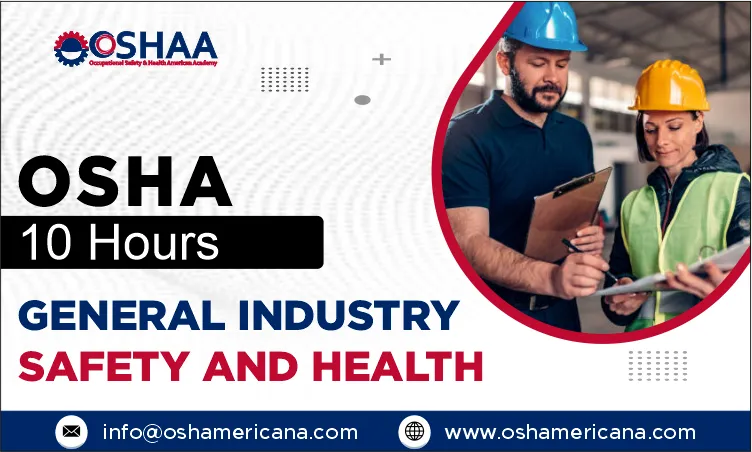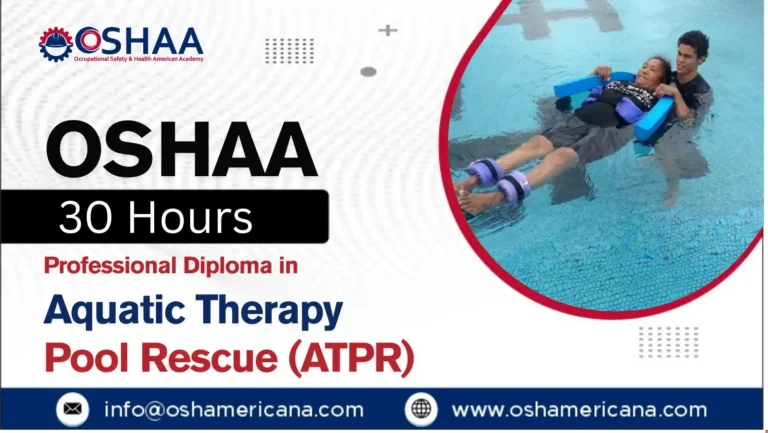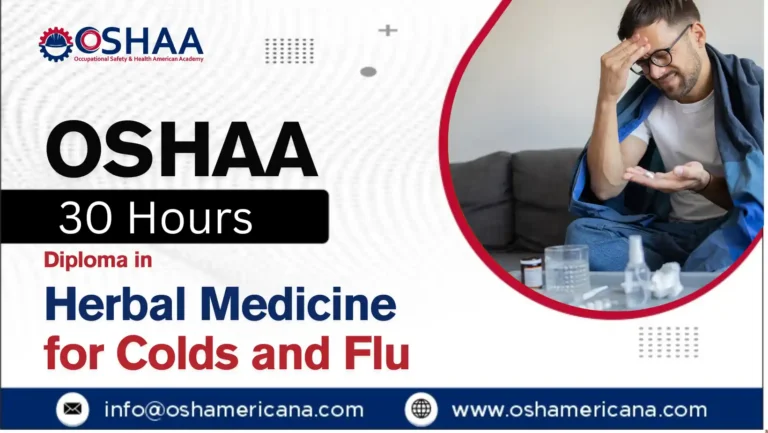In today’s dynamic workplaces, ensuring the safety and health of employees is paramount. The Occupational Safety and Health Administration (OSHA) recognizes this need and has developed the OSHA 10-Hour General Industry Safety and Health course as part of its Outreach Training Program. This comprehensive course is designed to equip workers with essential knowledge and skills to identify, mitigate, and prevent workplace hazards across various general industry sectors.
The OSHA 10-Hour General Industry Safety and Health course serves as a foundational program aimed at enhancing workplace safety practices. Whether you’re new to the industry or a seasoned professional, this training provides critical insights into OSHA regulations, safety protocols, and preventive measures necessary to maintain a safe working environment.
The OSHA 10-Hour General Industry Safety and Health course is more than just a training program—it’s a commitment to creating a safer, healthier workplace for all. By investing in OSHA 10-Hour General Industry Safety and Health course, organizations and individuals alike contribute to a culture of safety that protects lives, enhances productivity, and ensures regulatory compliance. Embrace the opportunity to elevate safety standards and empower your workforce with the knowledge and skills needed to thrive in today’s general industry environments.
OSHA 10-Hour General Industry Safety and Health
Study Units
Learning Outcomes
The OSHA 10-Hour General Industry Safety and Health course is an internationally recognised training programme designed to strengthen workplace safety knowledge and compliance skills across a wide range of industries. By completing this course, participants gain a thorough understanding of OSHA regulations, hazard recognition, and practical safety practices that directly contribute to safer, healthier, and more productive work environments. Below are the key learning outcomes in detail:
1. Introduction to OSHA
- Understanding OSHA’s Role: Participants will explore OSHA 10-Hour General Industry Safety and Health mission and the importance of its role in protecting employees across general industry sectors.
- Rights and Responsibilities: Learners will gain a clear understanding of worker rights and employer responsibilities under OSHA law.
- OSHA Standards Overview: The OSHA 10-Hour General Industry Safety and Health provides insight into the most important OSHA standards applicable to general industry, ensuring learners can identify relevant regulations.
2. Walking and Working Surfaces
- Hazard Recognition: Identify common hazards such as slips, trips, and falls that occur on walking and working surfaces.
- Preventive Measures: Implement effective control strategies to minimise risks and prevent workplace injuries.
- Regulatory Compliance: Apply OSHA 10-Hour General Industry Safety and Health walking and working surface requirements to daily operations for improved workplace safety.
3. Exit Routes, Emergency Action Plans, and Fire Prevention Plans
- Emergency Preparedness: Develop and implement structured emergency action plans tailored to workplace conditions.
- Fire Prevention Strategies: Understand fire hazards and design prevention measures to safeguard facilities and personnel.
- Exit Route Requirements: Learn how to design, identify, and maintain clear exit routes in compliance with OSHA guidelines.
4. Electrical Safety
- Recognising Electrical Hazards: Gain awareness of risks associated with electrical systems, wiring, and equipment.
- Safe Work Practices: Apply OSHA 10-Hour General Industry Safety and Health safe work methods, including Lockout/Tagout (LOTO) procedures, when working with electricity.
- OSHA Standards Application: Ensure workplace compliance with OSHA’s electrical safety standards to prevent shocks, burns, and fatalities.
5. Personal Protective Equipment (PPE)
- PPE Selection and Use: Learn how to select the appropriate PPE for different workplace hazards.
- Maintenance and Limitations: Understand how to properly maintain PPE and recognise its limitations.
- Employee Training: Gain the skills to train others on correct PPE use, as required under OSHA standards.
6. Hazard Communication
- Chemical Safety Awareness: Study OSHA’s Hazard Communication Standard (HCS) and the proper use of Safety Data Sheets (SDS).
- Proper Labelling: Implement effective labelling systems to communicate chemical hazards clearly.
- Training Protocols: Provide hazard communication training to employees handling or exposed to chemicals.
7. Machine Guarding
- Identifying Hazards: Recognise risks associated with machinery and moving parts.
- Guarding Requirements: Implement OSHA-compliant guarding solutions to reduce workplace injuries.
- Enforcing Compliance: Learn strategies to maintain and enforce machine guarding in line with regulations.
8. Industrial Hygiene
- Exposure Assessment: Assess workplaces for chemical, physical, and biological hazards.
- Control Measures: Implement engineering controls and administrative measures to reduce exposure risks.
- Monitoring Procedures: Conduct regular testing and evaluations to maintain compliance with OSHA’s industrial hygiene standards.
9. Ergonomics
- Designing Safer Workstations: Apply ergonomic principles to reduce musculoskeletal risks.
- Employee Training: Train employees on safe lifting techniques, posture, and ergonomic awareness.
- Injury Prevention: Introduce ergonomic programmes aimed at minimising long-term injuries and discomfort.
10. Bloodborne Pathogens
- Exposure Awareness: Identify workplace risks related to HIV, Hepatitis B, and other pathogens.
- Preventive Practices: Implement safe work practices to reduce exposure risks.
- OSHA Requirements: Ensure compliance with OSHA’s Bloodborne Pathogens Standard and related training mandates.
11. Introduction to Industrial Safety
- Building a Safety Culture: Learn how to embed safety awareness into daily workplace operations.
- Conducting Risk Assessments: Carry out systematic hazard identification and risk evaluation.
- Continuous Improvement: Support long-term safety initiatives and workplace improvements.
12. Safety and Health Programs
- Programme Development: Design and implement workplace health and safety programmes.
- Employee Engagement: Involve workers in developing and improving safety initiatives.
- Evaluation and Adjustment: Continuously evaluate safety programme performance and make necessary improvements.
13. Material Handling and Storage
- Safe Handling Practices: Learn how to safely handle and store hazardous and non-hazardous materials.
- Safe Equipment Use: Operate forklifts, hoists, and other handling equipment according to OSHA requirements.
- Regulatory Compliance: Understand OSHA’s standards for material handling, storage, and disposal.
14. Lockout/Tagout (LOTO)
- Energy Control Procedures: Develop effective Lockout/Tagout procedures to control hazardous energy sources.
- Employee Training: Learn how to train workers in safe application of LOTO protocols.
- Compliance with OSHA Standards: Ensure that all procedures meet OSHA’s requirements for hazardous energy control.
15. Fall Protection
- Identifying Fall Hazards: Recognise risks such as unprotected edges, ladders, and elevated work areas.
- Protection Systems: Learn the correct use of harnesses, guardrails, and fall arrest systems.
- Rescue Preparedness: Apply OSHA’s fall protection standards, including rescue procedures.
16. Confined Spaces
- Hazard Identification: Recognise atmospheric and physical hazards in confined spaces.
- Safe Entry Procedures: Implement OSHA-compliant procedures for safe entry and exit.
- Emergency Response: Develop confined space rescue plans and protocols.
17. Respiratory Protection
- Recognising Hazards: Identify airborne contaminants and respiratory hazards.
- Respirator Selection: Choose respirators suited to specific hazards and exposure levels.
- Fit Testing and Training: Carry out fit tests and provide OSHA-required training in respirator use.
18. Fire Safety
- Hazard Recognition: Identify fire risks within general industry environments.
- Prevention Measures: Implement OSHA fire prevention requirements.
- Emergency Response: Develop evacuation plans and emergency drills to prepare for fire incidents.
19. Introduction to OSHA Standards
- Understanding OSHA Standards: Gain a comprehensive overview of key OSHA regulations.
- Workplace Compliance: Ensure full compliance across different departments and tasks.
- Using OSHA Resources: Learn to use OSHA’s tools, publications, and guidelines to support workplace safety.
By completing the OSHA 10-Hour General Industry Safety and Health course, participants develop the essential knowledge, awareness, and confidence to protect themselves and others in the workplace. This training not only reduces accidents and ensures compliance with OSHA regulations but also contributes to building a proactive safety culture across industries.
The OSHA 10-Hour General Industry Safety and Health course offers numerous benefits for both employees and employers, focusing on enhancing workplace safety, compliance with regulations, and overall organizational efficiency. Here are the key benefits:
1. Enhanced Safety Awareness
- Hazard Recognition: Participants learn to identify common workplace hazards such as slips, trips, falls, electrical hazards, and chemical exposures.
- Preventive Measures: Understanding preventive measures and safe work practices reduces the risk of accidents and injuries.
2. Compliance with OSHA Regulations
- Knowledge of Standards: Familiarity with OSHA standards ensures compliance, reducing the risk of citations, fines, and penalties.
- Legal Protection: Demonstrating compliance with OSHA regulations protects organizations from legal liabilities.
3. Reduced Workplace Incidents
- Accident Prevention: Improved hazard awareness and safety protocols lead to fewer workplace accidents, injuries, and illnesses.
- Cost Savings: Reduction in workers’ compensation claims, insurance premiums, and costs associated with workplace incidents.
4. Improved Employee Morale
- Safety Culture: Investing in employee safety fosters a positive safety culture, enhancing morale and job satisfaction.
- Employee Engagement: Involving employees in safety programs increases engagement and commitment to workplace safety.
5. Enhanced Organizational Reputation
- Stakeholder Confidence: Demonstrating a commitment to employee safety enhances reputation among customers, clients, and stakeholders.
- Competitive Advantage: A strong safety record can differentiate organizations in competitive markets and attract top talent.
6. Professional Development
- Skill Enhancement: Participants acquire valuable safety knowledge and skills applicable across various general industry sectors.
- Career Advancement: Certification enhances professional credentials and career opportunities within the industry.
7. Comprehensive Industry Knowledge
- Specialized Training: Covers a wide range of critical topics including hazard communication, machine guarding, electrical safety, and more.
- Versatile Skills: Skills gained are transferable across different job roles and responsibilities within general industry settings.
8. Practical Application
- Hands-On Learning: Interactive modules and case studies apply theoretical knowledge to real-world scenarios, enhancing practical skills.
- Safety Solutions: Participants learn to implement effective safety solutions and contribute to continuous improvement in workplace safety.
9. Workplace Efficiency
- Productivity: A safe work environment reduces downtime due to accidents and disruptions, optimizing operational efficiency.
- Risk Management: Proactive risk management strategies minimize interruptions to business continuity.
The OSHA 10-Hour General Industry Safety and Health course is an essential investment for organizations committed to creating safe, compliant, and productive workplaces. By prioritizing safety through comprehensive training, employers not only protect their most valuable asset—their employees—but also contribute to overall organizational success and sustainability. Embrace the opportunity to enhance safety standards, mitigate risks, and foster a culture of safety that benefits everyone in the workplace.
The OSHA 10-Hour General Industry Safety and Health course is specifically designed to benefit a diverse range of professionals across various industries. This comprehensive training program is ideal for individuals and roles including:
- New Hires and Entry-Level Workers:
- Employees new to the workforce who require foundational safety training in general industry settings.
- Individuals transitioning into roles within manufacturing, warehousing, healthcare, hospitality, and other general industry sectors.
- Supervisors and Team Leaders:
- Front-line supervisors responsible for overseeing daily operations and ensuring adherence to safety protocols.
- Managers and team leaders tasked with implementing safety programs and fostering a culture of safety within their teams.
- Safety Coordinators and Safety Officers:
- Professionals dedicated to managing and coordinating safety initiatives and programs within organizations.
- Safety officers responsible for conducting inspections, audits, and ensuring compliance with OSHA regulations.
- Health and Safety Professionals:
- Occupational health and safety specialists and managers involved in designing, implementing, and evaluating safety programs.
- Safety consultants and advisors providing expert guidance on safety management and compliance strategies.
- Industrial Engineers and Technicians:
- Engineers and technicians responsible for equipment maintenance, process optimization, and ensuring workplace safety.
- Technologists involved in the design and implementation of safety protocols and procedures.
- Contractors and Subcontractors:
- Service contractors providing specialized services such as construction, maintenance, and facility management within general industry sectors.
- Subcontractors working on specific projects requiring compliance with OSHA safety standards.
- Educators and Trainers:
- Training instructors and educators responsible for delivering safety training programs and initiatives within organizations.
- Training coordinators organizing and managing training sessions to enhance safety awareness and skills among employees.
- Government Inspectors and Regulatory Officials:
- OSHA compliance officers and government inspectors responsible for enforcing safety regulations and conducting workplace inspections.
- Regulatory officials involved in developing, updating, and interpreting safety standards applicable to general industry.
The OSHA 10-Hour General Industry Safety and Health course is essential for anyone working within general industry sectors who seeks to enhance their safety knowledge, comply with regulatory standards, and contribute to creating a safer workplace environment. Whether you are new to the industry or a seasoned professional, this course provides valuable insights and skills necessary to promote workplace safety and health for all employees.







